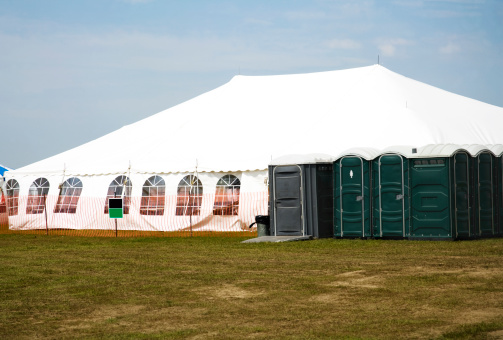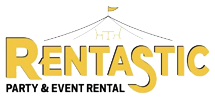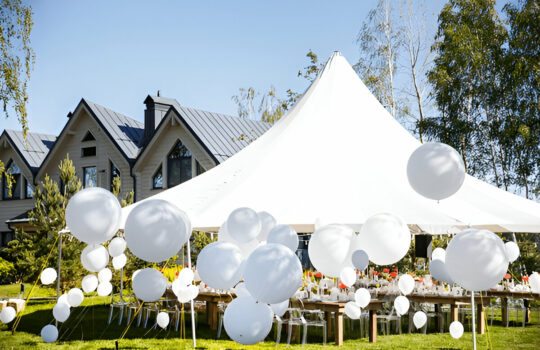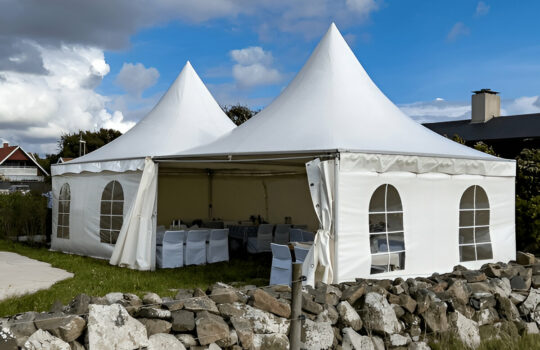Large Event Tent Rentals Made Easy
November 19, 2024 2024-11-19 4:40Large Event Tent Rentals Made Easy

Large Event Tent Rentals Made Easy
Explore large event tent rentals made easy in New York! Find the perfect tent for any occasion effortlessly.
Selecting the Right Event Tent
Choosing the appropriate tent for an event is crucial to ensure a successful experience. It involves understanding different types of tents and determining the correct size based on various factors.
Types of Event Tents
Event tents come in several styles, and selecting the right type is essential for meeting the event’s specific needs. Common types of event tents include:
- Pole Tents: These tents are supported by poles and are ideal for outdoor events. They have a classic look and allow for high ceilings, creating an open atmosphere.
- Frame Tents: A more stable option, frame tents do not require center poles and can be set up on various surfaces. They are versatile and often used for formal events.
- Clear-Span Tents: These structures offer a spacious interior free of poles, making them perfect for large events. They are often used for conventions and expos, providing unobstructed views and more usable space.
When considering large event tent rentals, understanding these types helps in making informed decisions. For more options, check out our commercial tent rentals for mega events or festival tent rentals for big crowds.
Determining Tent Size
Determining the right size for the event tent is critical for guest comfort and overall event flow. Here are key points to consider:
- Guest Count: A general rule of thumb is to allocate approximately 10 square feet of space per guest. For instance, a 20×30 tent is suitable for around 60 guests.
- Seating Arrangement: Different layouts, such as banquet style or theatre style, require varying amounts of space. It’s important to account for tables and chairs.
- Additional Features: Consider any extra space needed for amenities like a dance floor, buffet area, or stage. These requirements will influence the overall tent size needed.
| Guest Count | Recommended Tent Size |
|---|---|
| 60 | 20×30 |
| 100 | 30×40 |
| 150 | 30×60 or 40×40 |
| 200 | 40×60 |
Utilizing tent size calculators or charts provided by rental companies can ensure accurate sizing for the event. For more insights into larger gatherings, explore our top tent rentals for trade shows and expos or event tent rentals for commercial gatherings.
Planning ahead and selecting the appropriate type and size of tent will contribute significantly to the success of any event.
Planning Your Event Tent Rental
When organizing a large event, careful planning for the tent rental is pivotal. This includes various aspects such as booking timeframes, safety measures, and consideration of weather conditions.
Booking in Advance
To ensure availability, it’s advisable to arrange your large event tent rentals made easy well in advance, especially during peak event seasons. This proactive approach allows individuals to secure the best options before they get booked. Peaks in demand often coincide with local festivals, weddings, and corporate events, making early reservations crucial [1].
| Booking Timeframe | Recommendation |
|---|---|
| 6-12 months ahead | Major events (weddings, festivals) |
| 3-6 months ahead | Corporate events and trade shows |
| 1-3 months ahead | Smaller gatherings |
Safety Considerations
Safety should be a top priority when planning your event tent rental. It is essential to discuss safety features such as fire retardant materials, emergency exits, and anchoring systems with the rental company. Ensuring that the tent complies with safety regulations will protect all attendees and contribute to a smooth event.
| Safety Feature | Description |
|---|---|
| Fire Retardant Materials | Materials designed to resist ignition and slow the spread of flames |
| Emergency Exits | Clearly marked exits to facilitate safe evacuations |
| Anchoring Systems | Secure methods to stabilize the tent against wind and movement |
Weather Conditions
It’s also important to consider the weather conditions on the day of the event. Some tents are better suited for rainy or windy conditions, and it’s advisable to discuss these worries with the rental company. They can provide specific recommendations based on the forecast or suggest tents designed to withstand adverse weather.
| Weather Consideration | Recommended Tent Type |
|---|---|
| Rain | Waterproof tents with gutters |
| Wind | Sturdier poles and anchoring systems |
| Heat | Tents with sidewalls and ventilation options |
Planning for these elements ensures a seamless experience for all guests and participants. Proper preparation helps to alleviate potential issues that could arise, making the event enjoyable and memorable for everyone involved. For more related options, consider commercial tent rentals for mega events or festival tent rentals for big crowds.
Key Factors to Consider
When planning for large event tent rentals, several key factors can significantly influence the success of the event. These include permit requirements, venue assessment, and the setup and breakdown of the tent.
Permit Requirements
Before proceeding with a tent rental, it is crucial to understand local regulations that may require permits and inspections based on the location and size of the tent. Each municipality can have different rules, so he or she should check with local authorities to obtain the necessary approvals before finalizing any arrangements. For more detailed information on the requirements, refer to resources like Baystate Tent.
Venue Assessment
A thorough venue assessment is essential before renting a tent. Factors to consider include terrain, layout, and available space to ensure that the chosen tent fits seamlessly into the setting. This assessment will help identify any potential issues that could arise during the event. Additionally, having a backup plan is crucial. Being prepared with extra tents, emergency kits, or alternative indoor solutions can resolve unexpected situations during events where large event tent rentals are utilized.
Tent Setup and Breakdown
The setup and breakdown of the tent are critical components of the rental process. Typically, tent setup and breakdown can take anywhere from 30 to 60 minutes for a standard-sized tent, while larger tents may require more time due to their size and complexity. Testing the setup will provide a better understanding of the time needed for proper installation. For efficiency, engaging professional installers can ensure that the tent is erected correctly and safely. For useful insights on timing and logistics, visit TapGoods.
By considering these key factors, individuals can ensure a smoother planning process for large event tent rentals, leading to a successful event experience.
Event Tent Rental Market Insights
Understanding the dynamics of the event tent rental market is essential for both business owners and clients. Insights into demand, profit margins, and peak rental seasons can aid in making informed decisions.
Demand and Growth
The demand for event tent rentals is on the rise, driven by an increasing number of outdoor events, including weddings, festivals, and corporate gatherings. The Global Party Supply Rental Market is expected to reach USD 37.54 billion by 2030, indicating significant opportunities for growth in this sector. For the U.S. equipment rental market, it is projected to reach a remarkable 59.5 billion U.S. dollars by 2024, showcasing the expansive growth potential for event tent rental businesses.
| Market Segment | Projected Growth |
|---|---|
| Global Party Supply Rental | USD 37.54 billion by 2030 |
| U.S. Equipment Rental Market | 59.5 billion by 2024 |
Profit Margins
Rental businesses generally enjoy attractive profit margins, particularly in the event tent rental sector. The typical profit margin ranges from 10-15% on rented inventory. Offering high-quality products combined with exceptional customer support can enhance profitability. With repeat customers spending 67% more than new ones, strong customer relationships become vital for long-term success.
| Business Aspect | Profit Margin |
|---|---|
| General Rental Business | 10-15% |
| Customer Retention Impact | Repeat customers: +67% spend |
Peak Rental Seasons
Peak seasons for tent rentals typically occur during spring and summer. The milder weather conditions during these months attract more clients seeking outdoor event spaces. As a result, rental companies must be well-prepared to meet the heightened demand during these peak periods [5].
| Peak Season | Period |
|---|---|
| Spring | March – June |
| Summer | June – August |
Knowing these insights about the event tent rental market can help clients choose the best options and assist rental companies in strategizing for success. For specific needs, they can explore options like commercial tent rentals for mega events, festival tent rentals for big crowds, or top tent rentals for trade shows and expos.
Event Tent Rental Business Tips
Digital Presence
Establishing a strong digital presence is essential for a successful tent rental business. Potential clients often turn to the internet to find services, making a professional and user-friendly website a top priority. Engaging on social media platforms such as Facebook, Instagram, and LinkedIn can also help reach a wider audience and attract clients. A well-optimized website should provide clear information about the services offered, including commercial tent rentals for mega events and festival tent rentals for big crowds.
| Platform | Purpose |
|---|---|
| Website | Showcase services and portfolio |
| Engage with clients and share updates | |
| Display visual content of events | |
| Network with professionals in the industry |
Having a robust online presence can increase brand recognition and credibility, ultimately driving more business.
Customer Service Importance
Exceptional customer service is pivotal in the equipment rental sector. Research indicates that repeat customers are likely to spend 67% more than new ones. Providing quality service builds long-lasting relationships, fosters loyalty, and enhances business growth. Key elements of outstanding customer service include:
- Prompt communication
- Clear and transparent pricing
- Flexibility in accommodating client needs
- Follow-up after events to gather feedback
Taking the time to build relationships with clients can have significant impacts on overall success in the event tent rental business.
Rental Management Software
Utilizing rental management software can greatly streamline operations within an equipment rental business. Tools like RentMy offer features such as real-time booking, payment processing, and digital inventory management, which can enhance efficiency and accuracy [4]. Key benefits of using rental management software include:
| Feature | Benefits |
|---|---|
| Real-time booking | Reduces overlaps and scheduling conflicts |
| Payment processing | Simplifies transactions and accounting |
| Digital inventory management | Enhances tracking and availability |
| Financial reporting | Provides insights for better decision-making |
Incorporating technology into the rental process can save time and resources, allowing businesses to focus on customer service and growth.
Combining a strong digital presence, excellent customer service, and effective management tools is vital for success in the event tent rental market. By focusing on these areas, businesses can provide a seamless experience for their clients, ultimately leading to growth and sustainability in the competitive rental landscape. For further insights, explore our articles on event tent rentals for commercial gatherings and top tent rentals for trade shows and expos.
Avoiding Common Mistakes
When planning for large event tent rentals, it is crucial to avoid common pitfalls that can affect the overall experience of the event. Proper weather preparation, ensuring the right tent sizing, and conducting thorough site inspections are essential steps to ensure a successful rental process.
Weather Preparation
Ignoring the weather is a frequent mistake when arranging large event tent rentals. Weather changes can cause discomfort for guests if not taken into account. It is vital to choose a tent rental business that offers products equipped with sidewalls to protect against wind or rain. Being proactive about weather conditions can make a significant difference in guest experience.
| Weather Condition | Recommended Action |
|---|---|
| Rain | Opt for tents with sidewalls or waterproofing features. |
| Wind | Ensure the tent is secured properly to prevent damage. |
| High Heat | Consider tents with ventilation options to keep guests comfortable. |
For more detailed guidance on the event tent options suited for various weather conditions, check out our page on commercial tent rentals for mega events.
Proper Tent Sizing
Choosing the wrong tent size can significantly impact the guest experience; a tent that is too small can feel cramped, while one that is excessively large may create a sparse environment. To avoid this error, it is recommended to discuss the guest list and space requirements with the tent rental service before making a decision. Calculating the required size based on the number of guests ensures everyone can enjoy the event comfortably.
| Tent Size (Square Feet) | Estimated Capacity (Seated) |
|---|---|
| 20 x 20 | 40 |
| 20 x 30 | 60 |
| 30 x 30 | 80 |
| 40 x 40 | 160 |
For more information on the best options for large gatherings, visit our page on event tent rentals for commercial gatherings.
Site Inspections
Conducting site inspections early in the planning process is essential to identify potential issues such as uneven ground or overhead obstacles. These inspections help avoid last-minute surprises that could disrupt the event. It is recommended that the large event tent rental service performs a thorough assessment of the venue to ensure a smooth setup.
For more insights into planning for specific types of events, refer to our guide on festival tent rentals for big crowds and top tent rentals for trade shows and expos. By focusing on these areas, one can ensure that the event runs seamlessly and meets the expectations of all attendees.







